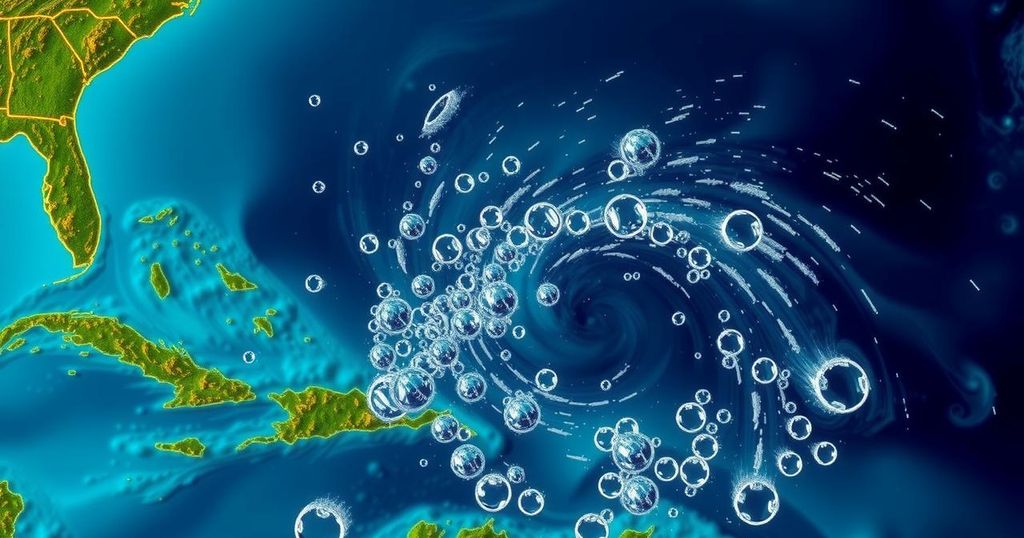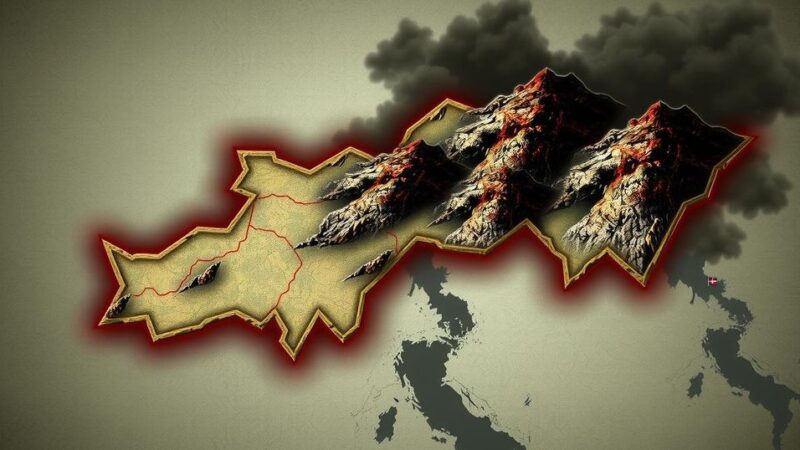Hurricane experts are monitoring a potential tropical storm brewing in the Central Atlantic that may evolve into Tropical Storm Nadine. The National Hurricane Center indicates a 20% chance of the storm reaching cyclonic strength within two days, growing to 30% in one week. However, unfavorable conditions are likely to limit its intensification. The storm is expected to head towards Puerto Rico and the Dominican Republic, posing little threat to Florida due to existing atmospheric patterns.
As Tropical Storm Nadine potentially forms from a low-pressure system in the Central Atlantic, hurricane experts remain cautious about the storm’s intensity and likelihood of development. The National Hurricane Center (NHC) has stated that the storm currently holds a 20 percent probability of becoming a tropical cyclone within 48 hours, rising to 30 percent over the next week. The formation is influenced by various weather conditions, notably strong upper-level winds forecasted to hinder development by the weekend. If the storm does indeed reach tropical storm status, it would be named Nadine. Experts emphasize the challenges this low-pressure system faces due to unfavorable environmental conditions, which include high wind shear and the system’s current disorganized state. Brian Tang, an associate professor at the University at Albany, explained the forecasting process: “A 20 to 30 percent chance of formation indicates small odds that the tropical disturbance will form into a tropical depression or storm over the next week.” Storm classification requires wind speed thresholds, and an intensified storm could carry significant consequences depending on its eventual trajectory. Annalisa Bracco, a professor at Georgia Institute of Technology, highlighted that several factors such as warm sea surface temperatures and low wind shear are critical for storm growth. Notably, historic hurricanes like Milton have shown rapid intensification under optimal conditions. However, the present system’s proximity to Puerto Rico and Hispaniola, along with the prevailing atmospheric phenomena, suggests a complicated forecasting scenario. Regarding its projected path, the system is likely to continue moving towards Puerto Rico and the Dominican Republic. However, forecasters, such as Xiangbo Feng from the University of Reading, noted that its course is heavily influenced by large-scale weather patterns and model simulations. Furthermore, predictions indicate minimal threat to Florida, largely due to a prevailing high-pressure system that should redirect the storm away from the state.
The article centers on the potential formation of Tropical Storm Nadine from a disorganized low-pressure system currently located in the Central Atlantic. Experts from the National Hurricane Center provide probabilities regarding the likelihood of this storm evolving into a tropical cyclone. The dialogue also outlines the necessary conditions for a tropical storm to form and how environmental factors may influence development. The discussion includes references to recent hurricanes, illustrating how forecasts are grounded in both historical data and current weather modeling practice. The article emphasizes the potential trajectory of the storm, highlighting its impact on the Caribbean and potential effects on Florida.
In summary, while there exists a slight possibility for the low-pressure system in the Central Atlantic to strengthen into Tropical Storm Nadine, meteorologists remain skeptical due to unfavorable atmospheric conditions. With a trajectory projected towards Puerto Rico and the Dominican Republic, the system is expected to encounter increasing wind shear, complicating its development. Current forecasts suggest minimal risk to Florida, although any significant strengthening could alter potential impacts significantly. Continuous monitoring and updates will be essential as the situation evolves.
Original Source: www.newsweek.com






